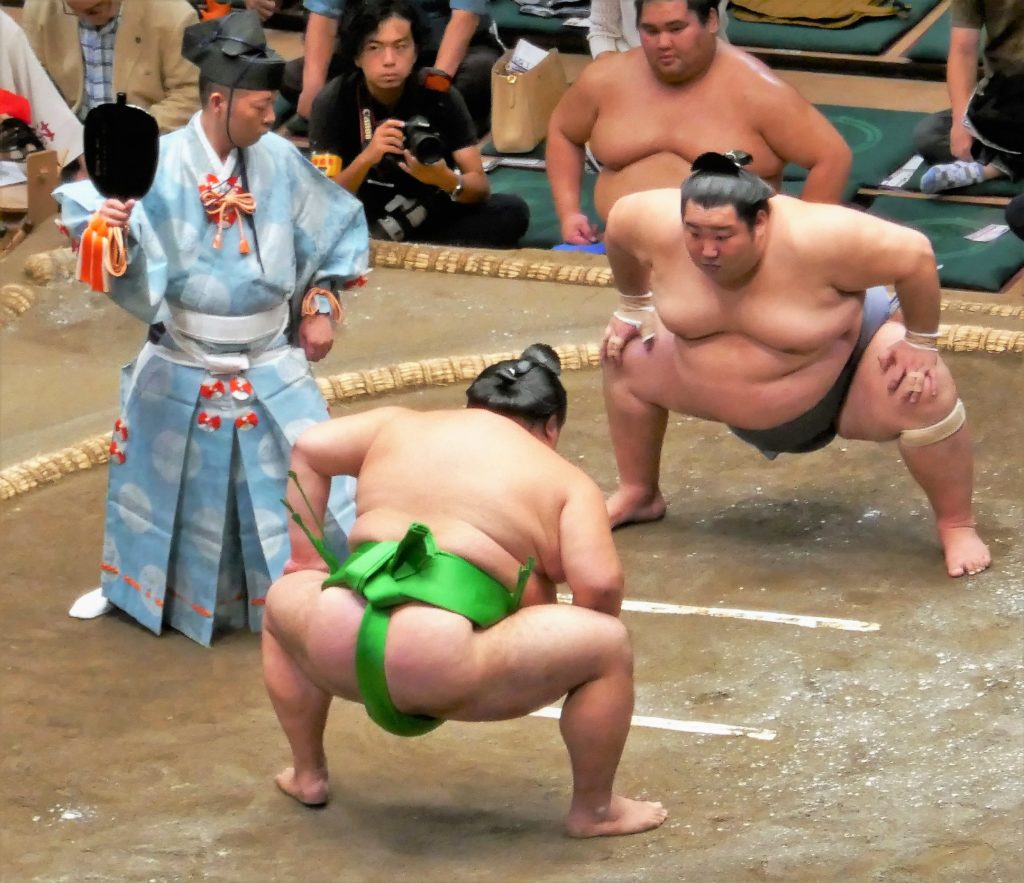
Overview and History
Despite the ever-visible popularity of baseball, sumo wrestling is the national sport of Japan. Baseball may have made its way to Japan shortly after the sport came into existence, in the second half of the 19th century, but sumo has been around for about 2,000 years!
Sumo originated as a form of entertainment in imperial courts for royalty and kami, the gods of the Shinto religion. One of my favorite things about sumo is that if you go to see a tournament today, you will be witnessing an event very similar to what those early viewers saw; the sport serves as a time machine, kind of like when you go to a game at Fenway Park!
The dress of the wrestlers and Gyōji (the referee) is nearly identical to that from ancient paintings and other depictions of the sport. The rules and other traditions, such as ritualistic shows of intimidation in the form of squatting, snarling, and other gesticulations, remain unchanged. The elevated match ring is nearly the same as well: it is made of clay, covered in sand, and delineated by rice straw that is partially sunken into the clay. For all official matches, the ring is constructed using traditional tools and methods.
Despite the elegance and rituals, sumo is a straightforward sport. Essentially, the only rule is that the first wrestler who leaves the ring or hits the ground with any body part other than his feet loses the match. The whole thing is usually over in a matter of seconds, although in rare and exciting instances it can take around a minute!
Training and Weight Gain
Wrestlers belong to different training stables, called heya, where they live and work full-time on their technique, flexibility, agility, and strength while maintaining and adding to their weight.
So, why are the wrestlers so big? It’s because there are no weight classes in sumo; the bigger a wrestler is – while maintaining his power and agility – the bigger his advantage is over his opponent. The largest competitors aren’t always the best, but those who find the optimal combination of size, speed, and strength are.
Putting on weight is an essential part of sumo training. The staple of the sumo diet is chanko nabe, a stew of rich chicken broth and a variety of proteins and vegetables. The additives vary depending on the stable and what’s available, but the broth is always chicken, with the thought that wrestlers should always be on two feet, like a chicken, and not four. At most sumo tournaments, food vendors sell chanko nabe to spectators, and some retired wrestlers have even opened restaurants around the country that specialize in the stew.
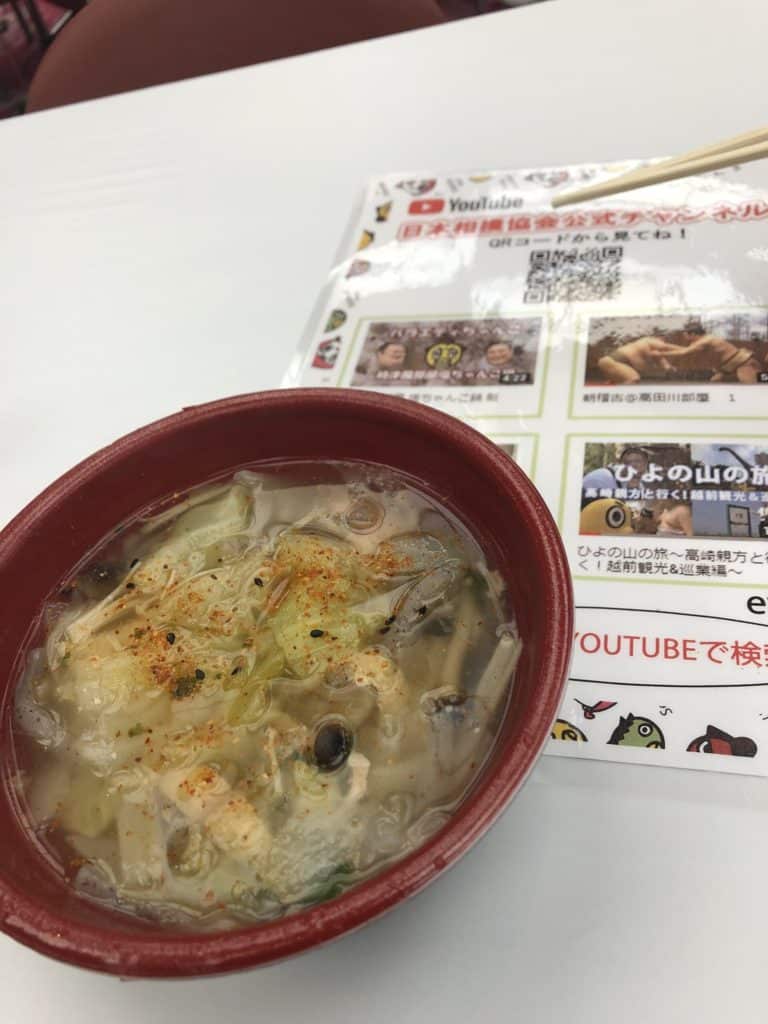
Tournaments and Rankings
The professional sumo schedule consists of six annual tournaments:
- January: Ryōgoku Kokugikan (Tokyo)
- March: Osaka Prefectural Gymnasium (Osaka)
- May: Ryōgoku Kokugikan (Tokyo)
- July: Aichi Prefectural Gymnasium (Nagoya)
- September: Ryōgoku Kokugikan (Tokyo)
- November: Fukuoka Kokusai Center (Fukuoka)
Each official tournament, or honbasho, lasts 15 days. The higher ranking wrestlers will participate in one match per day, and the lower ranking wrestlers will participate in approximately one match every other day.
Every wrestler’s ranking is at stake each honbasho, as the ranking is based on their win-loss record at the previous tournament. The top ranking is called makuuchi, and it has a fixed capacity of 42 wrestlers. There are five divisions below makuuchi. If a wrestler has more wins than losses in a honbasho, he will typically move up in ranking before the next one; if he has more losses than wins, he is demoted.
Of the makuuchi, the Sumo Association may deem certain wrestlers yokozuna, which is the highest honor in sumo. This title is reserved for the truly legendary wrestlers and puts them in a class above everyone else. There are no specific criteria for becoming yokozuna, but you know one when you see one: only 72 wrestlers have earned the title since the 1600s.
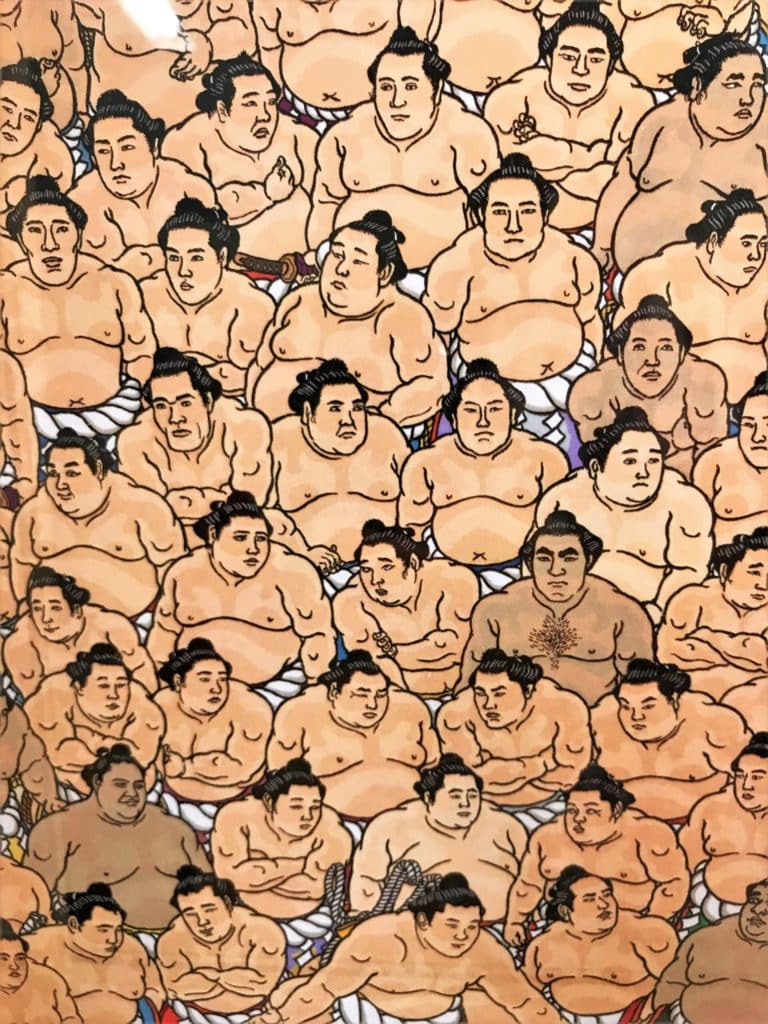
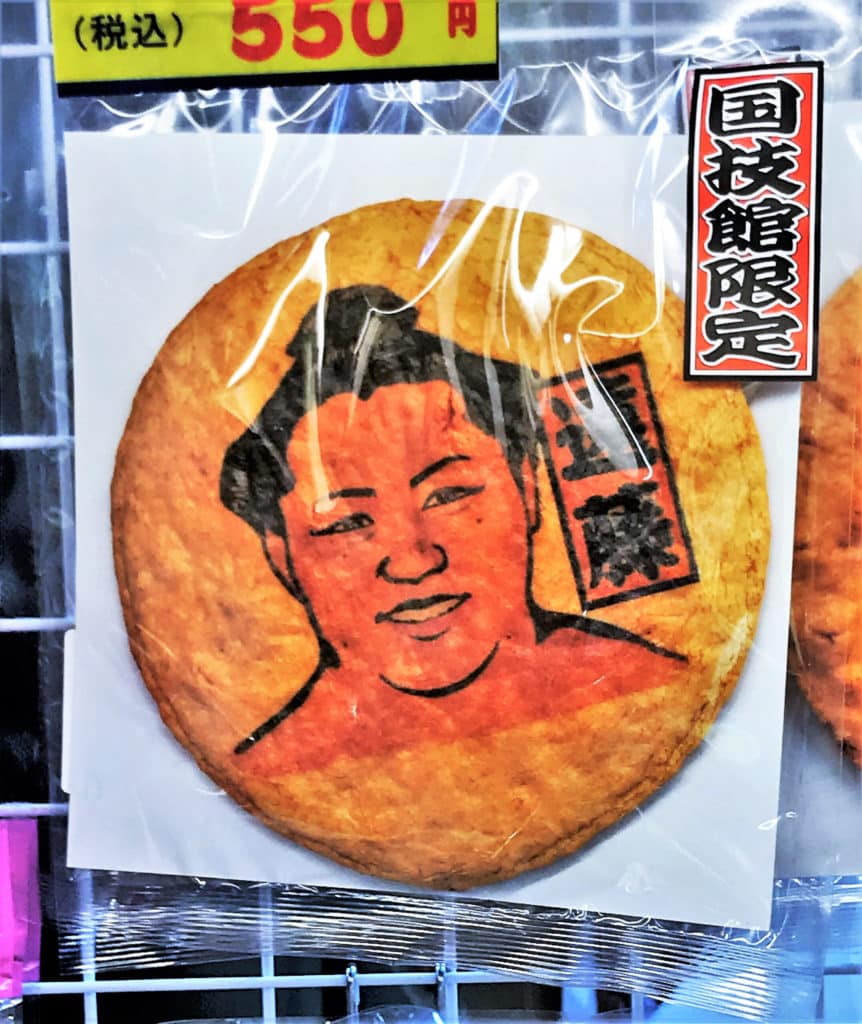

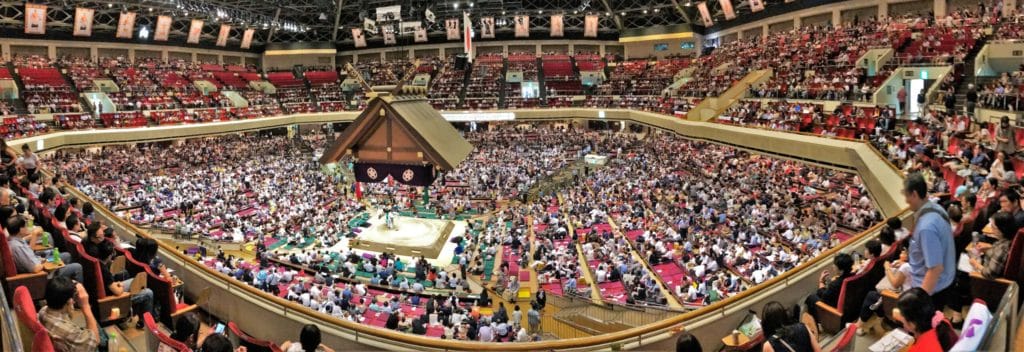
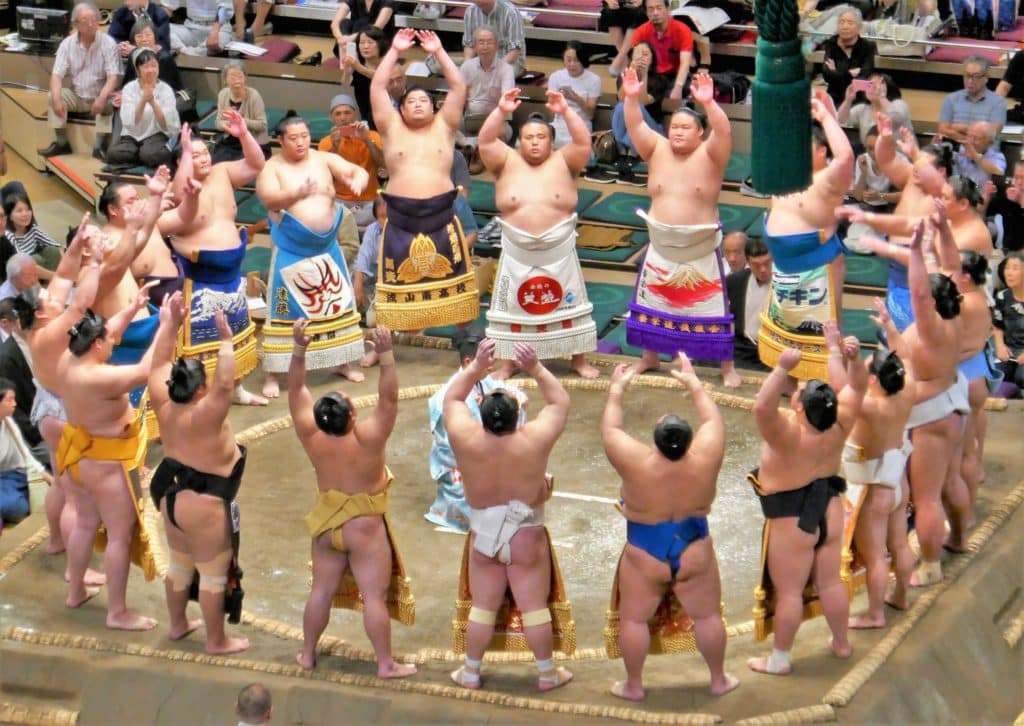
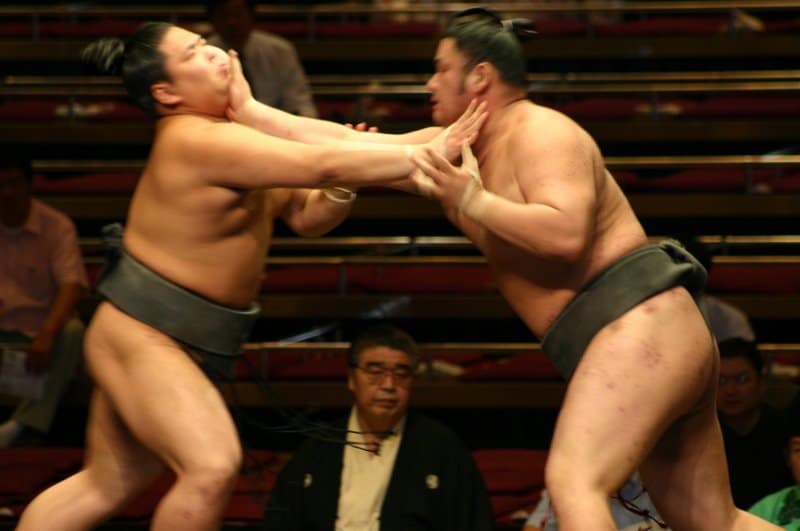
Attending a sumo match is a fascinating and entertaining sporting experience. It is an all-day affair, with the lower-ranked wrestlers starting early in the morning and the higher-ranked wrestlers progressively competing throughout the day. One of the neatest aspects is seeing the ceremonial ring entrance of each division’s wrestlers before their group competes. As the day continues, the stands fill up, and the energy in the building grows along with the size and skill of the wrestlers!
The famed Ryogoku Kokugikan sumo arena in Tokyo is easily accessible, with its own stop along the JR Sobu (yellow) line. Inside the arena is the Sumo Museum, with beautiful ancient artifacts from the sport and tributes to past yokozuna. Perusing the museum and admiring the art around the arena, you can’t help but notice how little the sport has changed over the centuries.
